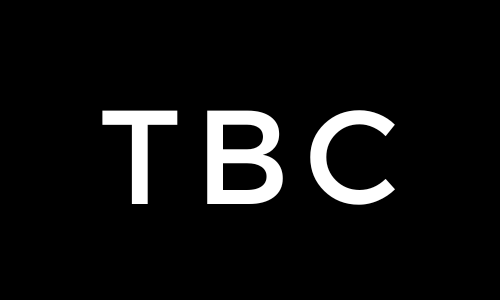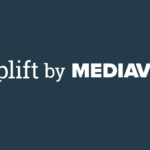If you’re on Medium like yours truly, you’ve probably seen the “Paywall” option. I mean, who hasn’t? And if you’ve been writing on the platform for a while, you might be wondering whether or not you should start slapping a paywall on your content.
But first, what is a paywall?
By definition, a paywall is a system websites use to restrict access to certain content unless the user pays for it or subscribes. Simply put, it’s a digital barrier that only allows paid users to view premium content. Many news sites, online publications, and platforms like Medium use paywalls to monetize their content.
It’s a tempting feature, especially if you’re hoping to make some cash from your writing. But the reality is that not every story deserves to be paywalled, and doing it the wrong way can actually hurt your growth.
Here’s a breakdown of when and why you should put your story behind a paywall — and when you should absolutely not.
When You Should Paywall Your Story
1. When Your Content Is High Value and Niche
If you’re offering in-depth, niche content that provides real value — stuff people can’t easily find for free elsewhere — go ahead and paywall it. This works particularly well if you’re writing in areas like personal development, technical tutorials, or offering unique industry insights. Readers are more willing to pay for content that educates them or solves a problem they have.
For example, if you’re writing about:
- Advanced SEO strategies for small businesses
- Freelance business tips from your 10 years of experience
- Unique, actionable personal finance advice
- Industry-specific content like SaaS trends or coding tutorials
Your story is worth paywalling. People will pay for valuable, specific information — especially if it saves them time or offers expert insights.
2. When You Have a Loyal Audience
If you’ve built up a solid, engaged following on Medium, you can get away with paywalling more of your content. Your audience already knows and trusts you, and they’re more likely to shell out a few bucks to access your premium stories.
Loyal readers are happy to support creators they enjoy, especially if your content consistently delivers value. This works particularly well for writers who produce long-form, deeply researched pieces, or thought-provoking opinion articles.
Pro Tip: Don’t suddenly start paywalling everything if your readers aren’t used to it. Ease into it by paywalling specific stories that are more valuable or unique.
3. When You’re Telling a Personal Story with Deep Impact
Personal stories that resonate on an emotional level are another strong candidate for paywalling. Readers are more willing to pay for deeply personal essays, especially if they touch on universal themes like overcoming hardship, personal growth, or major life lessons.
These types of stories work because readers value authenticity, and they often feel a connection with the writer. If you’re sharing something raw, vulnerable, or deeply impactful, it’s worth putting a price tag on it.
4. When You Want to Monetize Consistently
If your goal is to make consistent income from Medium, then paywalling your stories is a no-brainer. Medium’s Partner Program pays writers based on the time readers spend reading their work. The more people read your paywalled stories, the more money you make.
However, remember that paywalling everything might limit your reach, so balance your free and paid content carefully. More on this later.
5. When You’re Offering Exclusive Content
Are you sharing something your readers can’t get anywhere else? Maybe you’re offering exclusive interviews, rare insights, or an insider’s look at a particular industry. If so, you should definitely paywall it. People will pay for access to premium, exclusive content — especially if it’s not available to the public.
This approach works particularly well if you’re an authority in your field, or if you’re able to offer behind-the-scenes access or privileged information.
When You Should NOT Paywall Your Story
1. When You’re Trying to Build an Audience
Here’s the harsh truth: if you’re new to Medium or still trying to grow your audience, paywalling your content can backfire. Paywalled stories are more likely to stay within the Medium ecosystem, which limits their exposure. If you don’t have a following yet, you need to be focused on building an audience first, not gating your content.
New writers often make the mistake of paywalling too soon, hoping to make money right off the bat. In reality, it’s better to leave your early stories free so you can reach more readers and grow a loyal following first.
Pro Tip: Start by offering free content that showcases your skills and expertise. Once you’ve built trust and engagement, you can start paywalling some of your higher-value stories.
2. When Your Content Is Too Generic
If you’re writing generic content that’s already widely available for free, you’re not going to get much traction behind a paywall. For example, if your article is something like “10 Tips to Be More Productive” or “How to Start a Blog in 2024,” don’t expect readers to pay for that.
Before paywalling, ask yourself: Is this content something people could easily find elsewhere? If the answer is yes, keep it free.
3. When You Want to Go Viral
Paywalling your content on Medium means it’s behind a gate that not all readers will want to cross. If your goal is to reach a large number of people, paywalling might hurt your chances of going viral. Free stories are more likely to be shared widely and gain traction on social media, driving more eyes to your content.
Pro Tip: If you’re aiming for maximum exposure or trying to get a particular piece to go viral, keep it free. Use that traffic to drive readers to your paywalled stories later.
4. When You’re Testing New Ideas
If you’re experimenting with new topics or types of writing, it’s better to keep those stories free. Paywalling content that’s experimental might limit your feedback and readership, and you won’t get as clear a sense of whether or not the new direction is resonating with your audience.
Start with free stories, gather feedback, and if a particular topic or style gains traction, consider paywalling your future content in that space.
5. When It’s a Short, Low-Effort Piece
Paywalling short, low-effort stories is a bad move. Readers are more likely to pay for well-researched, long-form content, not a quick 300-word opinion piece.
If you want to keep readers happy and avoid bad reviews or complaints, save the paywall for your best work.
Pro Tip: Keep shorter or less substantial pieces free and focus on delivering high-quality, paywalled content when it makes sense.
Conclusion
Knowing when to paywall your Medium stories is key to balancing growth and monetization. Paywall when your content offers real value, targets a loyal audience, or provides something exclusive. On the flip side, if you’re trying to build your audience or test new ideas, keep it free.
The bottom line is this: don’t be afraid to paywall your work if it’s valuable, but don’t assume everything you write should be behind a gate. Be strategic, and over time, you’ll figure out the perfect mix to grow your following and make some money along the way.
If you enjoyed this article, consider reading more and following me! I love talking about money and finding cool new ways to make money.
Until next time.
Discover more from The Blog Channel
Subscribe to get the latest posts sent to your email.









